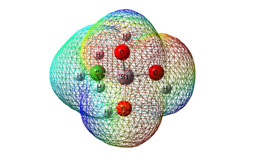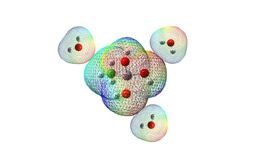No products
History of G5
What is Organic Silicon?
Silicon and Health: It’s all about Connective Tissue Health
Dietary Silicon and Connective Tissue Health
Connective tissue is a vital component for the health of every organ throughout the body. Connective tissue makes up a variety of physical structures including joints, cartilage, bones, skin (nails and hair) and blood vessels including the heart. Therefore, organs require silicon to restore or conserve their health and equilibrium but with the ageing process the concentration of silicon present in the organs diminishes in a seemingly irreversible manner.
What is Silicon actually doing?
Silicon deficiency negatively affects organs and tissues containing collagen. The silicon atom appears to sit inside the collagen, acting as ‘glue’ for individual collagen fibres. Overall the collagen structure, like the famous DNA molecule, is coiled into a ‘spring’, giving cells and organs their elasticity and easy gliding movements. Silicon may therefore be vital to the springy structure of collagen and its smooth, elastic motion. Collagen gives strength and flexibility to connective tissue which, in turn, gives health and wellbeing to all organs of the body from the brain through to skin and bones.
Why is silicon beneficial?
Silicon has long been thought of as a vital element for well-being. Scientific papers over the years have confirmed the beneficial results of taking silicon.
- dietary silicon is essential for normal growth
- collagen containing tissues such as the heart, other blood vessels, bone, joints, skin, hair and nails require silicon for normal development and function
- silicon is beneficial for normal healthy arteries, preventing cholesterol plaque formation

- ingestion of organic silicon have increased bone volume in the hip of older, female patients with the bone disease, osteoporosis
- younger women and men also respond well to high silicon intakes, increasing their bone mineral density.
- important role in aspects of brain function and this phenomenon has been especially related to the ability of silicon to bind to aluminium and neutralise its toxicity
Where in the Diet do we find Silicon?
We have all been exposed to silicon in the soluble silicic acid form throughout the evolutionary process. Scientific studies have shown that this form of silicon is most readily absorbed into the human body and utilised by human cells. Green beans and cereal products are particularly high sources of silicon and the body has found ways to digest this silicon into soluble forms allowing much of it to be absorbed. Many changes to the modern diet probably mean that silicon is not as common in the diet as it once was. The purification of tap water, refined processing of cereals and high intensity agriculture are some examples of where silicon can be lost in the diet. Despite this, our average intake of silicon in Europe is probably around 20 – 30 mg/day.
Organic Silicon: What is it and why is it special?
Organic Silicon is also commonly referred to as MMST and is the active moiety of ‘G5®’. MMST stands for ‘monomethylsilanetriol’. In fact, the molecule looks very like natural, dietary derived silicon (which is ‘orthosilicic acid’) but with one small but important difference. For Organic Silicon, a hydroxide group (that is oxygen plus hydrogen) has been replaced by a methyl group (that is carbon plus three hydrogens). A simple chemical representation of the molecule can be seen below:

The Carbon (C)-Silicon (Si) linkage is one of very, very high energy and it also imparts some special characteristics to the molecule. This can be observed when one looks at the ‘electric charge’ or ‘energy’ surrounding the MMST molecule.

On the right side of the above molecule, the calculated energy field is a mixture of red (negative charge), green (neutral) and blue (positive charge): in other words with varying polarity which makes it look like, and behave like, water. On the left side of the molecule, however, the area is all green (neutral) which means that on this side it behaves like a lipid (an oil). As a result, this molecule travels in water and also through lipid/oil, which is important in the body, because each cell is made up of 2 things: water and the lipid membranes around and in the cell. MMST therefore has the ability to pass into cells and travel around the body and so acts as a really efficient delivery system for silicon. This is referred to as an ‘amphiphilic molecule’
However, in its natural environment, the molecule is surrounded always by water; the water molecule sits adjacent to the MMST molecule: they pack together and therefore the correct concentration and pH is required to achieve the packing of the water molecules. In homeopathic medicine, memory is believed to be carried through the medium in this fashion.

*Amphiphilic is a term that refers to the ability of a molecule to be both soluble (dissolved) in water and oil. It is unusual and allows molecules to travel through the water based blood stream of the body but equally across the oil based membranes of cells.
